NJ Teachers of English to Speakers of Other Languages
NJ Bilingual Educators
ARTICLES
Editor: Lisa Rose Johnson- From the Editor
President: Caia Schlessinger- Announcing the first NJTESOL/NJBE Executive Director
Vice-President: Margaret Churchill- Equity for Language Learners: Keynote Speakers
Past President: JoAnne Negrin- Using Our Voices to Support ELLs
Business Administrator: Gwen Franks- Spring 2020 Conference Registration
Advocacy: Elizabeth Franks- Advocacy Corner
Historian: Barbara Tedesco- Retirement: The Next Chapter
Exhibitor Liaison: Tina Kern- Childhood Interrupted: A Case Study in Social Emotional Learning
Representative at Large: Alamelu Sundaram-Walters- How to track your students’ growth when your school’s population changes
Technology Coordinator: Marilyn Pongracz- Games to Learn English
Guest Contributor: Jeffrey Linn- What Does Be Mean?
Guest Contributor: Sara Lancelotti- Poetry in the ESL Classroom
From the Editor
Dr. Lisa Rose Johnson, Ed.D.
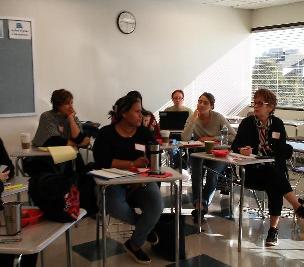 Happy New Year, and what a year it has been! As always, the fall is chock full of professional development. Many members were out in full force, attending our events. October was a very busy month for our organization. The 2019-2020 school year kicked off with two Edcamps on October 5th at Bergen Community College’s Meadowlands Campus in Lyndhurst, and at Stockton University in Galloway Township. In addition to the EdCamps, NJTESOL/NJBE held its annual Advocacy Summit at the Rutgers Graduate School of Education on October 12, 2019. NJTESOL/NJBE members also attended and presented at the National WIDA Conference in Providence, Rhode Island, from October 15th to the 18th. Here are the members who presented at the conference.
Happy New Year, and what a year it has been! As always, the fall is chock full of professional development. Many members were out in full force, attending our events. October was a very busy month for our organization. The 2019-2020 school year kicked off with two Edcamps on October 5th at Bergen Community College’s Meadowlands Campus in Lyndhurst, and at Stockton University in Galloway Township. In addition to the EdCamps, NJTESOL/NJBE held its annual Advocacy Summit at the Rutgers Graduate School of Education on October 12, 2019. NJTESOL/NJBE members also attended and presented at the National WIDA Conference in Providence, Rhode Island, from October 15th to the 18th. Here are the members who presented at the conference.
WIDA 2019 Conference Presentations:
• Utilizing Writing Frames to Increase Writing Output and Clarity- Dr. Lisa Rose Johnson, Ed.D.
• Reading and Writing for Multilingual Learners- Cynthia Lundgren and Maggie Churchill
NJTESOL/NJBE is an affiliate of the New Jersey Education Association (NJEA). As an affiliated group, we sponsored five proposals at this annual meeting in Atlantic City. Below is a list of the presentations. Additionally, Bryan Meadows (the past Teacher Education SIG Representative) and Hillary G. Almeida presented together on middle school content strategies for ELLs; their workshop fell under the middle school strand.
NJEA 2019 Presentations
• ELLs-Ells and Disabilities: Developing Documentation for Your Intervention Team – Margaret A. McGowan
• Motivate the Heck out of them: Getting them to Produce- Mr. Jason J. Velante Sr.
• Preservice Teachers: Creating Inclusive Learning Environments for English Learners- Dana J. Nelson & Dr. Maria Villalobos-Buehner
• Teachers Without Borders -Suzane E. Cole
• What do Teachers Think They Need to Know about Language? – Lois N. Spitzer & Joanne M. Negrin
• Supporting English Learner Students In Middle School Content-Area Classrooms- Bryan Meadows & Hilary G. Almeida
If you are interested in learning more about these topics, please consider viewing the NJEA Review October Conference issue by clicking on the hyperlink. Now that 2020 has officially arrived, NJTESOL/NJBE board members are gearing up for the annual conference in May. On behalf of the organization, I would like to thank everyone who submitted proposals; you are what makes our annual conference so unique.
Regards,
Lisa Rose Johnson
Dr. Lisa Rose Johnson, Ed.D, is the editor of Voices and also serves as the Teacher Education Representative. She works at Rowan University in the Teachers of Students with Disabilities (TOSD) Program.
Announcing the first NJTESOL/NJBE Executive Director
By Caia Schlessinger
A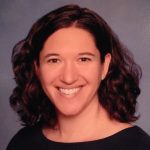 s the President of NJTESOL/NJBE, I am thrilled to announce our first Executive Director, Kathleen Fernandez. Our organization currently has approximately 1,500 members. We are continually growing and branching into new areas of professional development and advocacy. The Executive Board has been in discussions for several years about the need for an executive director who will help steer our organization as we continue to explore new opportunities to better represent educators as well as their students and families.
s the President of NJTESOL/NJBE, I am thrilled to announce our first Executive Director, Kathleen Fernandez. Our organization currently has approximately 1,500 members. We are continually growing and branching into new areas of professional development and advocacy. The Executive Board has been in discussions for several years about the need for an executive director who will help steer our organization as we continue to explore new opportunities to better represent educators as well as their students and families.
Ms. Fernandez taught ESL for more than 30 years including one year as a bilingual teacher. She has been teaching Kindergarten – 8th grade for 21 years in the Lumberton School District. She has had experience with Pre-K through 12th grade, as well as instructing teacher candidates at Rowan University. She has presented for NJTESOL/NJBE multiple times and participated as an active volunteer in registration and other tasks at a variety of conferences.
 Ms. Fernandez reactivated the NJTESOL/NJBE Burlington County chapter. She served as Chapter Leader for 19 years. Additionally, she presented at the Tri-County Speech and Language Association, West Jersey Reading Council, NJEA Conference in Atlantic City, and several school districts. In Lumberton, she organized in-service days for the ESL/Bilingual educators of the Rancocas Valley Regional High School Districts. Ms. Fernandez also participated in committee work/advocacy on the state level as a member of the NJDOE Bilingual Advisory Committee and at the national level as a consultant/trainer/validator for ETS in the development of the English as a New Language Praxis and assessments for the National Board for Professional Teaching Standards.
Ms. Fernandez reactivated the NJTESOL/NJBE Burlington County chapter. She served as Chapter Leader for 19 years. Additionally, she presented at the Tri-County Speech and Language Association, West Jersey Reading Council, NJEA Conference in Atlantic City, and several school districts. In Lumberton, she organized in-service days for the ESL/Bilingual educators of the Rancocas Valley Regional High School Districts. Ms. Fernandez also participated in committee work/advocacy on the state level as a member of the NJDOE Bilingual Advisory Committee and at the national level as a consultant/trainer/validator for ETS in the development of the English as a New Language Praxis and assessments for the National Board for Professional Teaching Standards.
As the Executive Director of NJTESOL/NJBE, Ms. Fernandez will work closely with our Executive Board to further our mission. We will continue to keep our members updated as we develop new initiatives.
Caia Schlessinger is the President of NJTESOL/NJBE and an ESL Teacher in the Highland Park School District.
Equity for Language Learners: Keynote Speakers
By Maggie Churchill
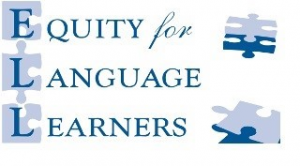 We are excited to announce the speakers for the 2020 annual conference, Equity for Language Learners. All three keynote speakers will provide focused feedback in breakout sessions immediately following each presentation. We look forward to seeing you there!
We are excited to announce the speakers for the 2020 annual conference, Equity for Language Learners. All three keynote speakers will provide focused feedback in breakout sessions immediately following each presentation. We look forward to seeing you there!
Wednesday, May 27, 2020
Dr. José Medina, Founder and Chief Educational Advocate at Dr. José Medina: Educational Solutions
Topic: Serving the Needs of Emergent Bilingual Students
 Dr. Medina has a compelling story as a child who immigrated to El Paso from Mexico. His early experiences learning English led directly to the work that he does today to bring equity to dual language teaching and learning throughout the United States. Dr. Medina previously served as the Director of Dual Language Education and Bilingual Education at the Center for Applied Linguistics (CAL) in Washington, DC. Dr. Medina is one of the authors of Guiding Principles for Dual Language Education and the C6 Biliteracy Framework for Dual Language Instruction. He serves as the Director of the National Dual Language Forum.
Dr. Medina has a compelling story as a child who immigrated to El Paso from Mexico. His early experiences learning English led directly to the work that he does today to bring equity to dual language teaching and learning throughout the United States. Dr. Medina previously served as the Director of Dual Language Education and Bilingual Education at the Center for Applied Linguistics (CAL) in Washington, DC. Dr. Medina is one of the authors of Guiding Principles for Dual Language Education and the C6 Biliteracy Framework for Dual Language Instruction. He serves as the Director of the National Dual Language Forum.
Read Dr. Medina’s personal journey at https://duallanguageschools.org/post/joe-my-personal-english-learner-story/3/
Follow Dr. Medina on Twitter at @josemedinajr89
Thursday, May 28, 2020
Jane Hill, Principal Consultant for McREL
Topic: Language and Discourse for English Language Learners
 Ms. Hill consults and trains teachers and administrators nationally and internationally for McREL (Mid-continent Research for Education and Learning). She has worked in the areas of second language acquisition and special education for 29 years. She has published articles in Language Magazine, The Journal of Staff Development, The School Administrator, and Leadership Information. She coauthored Classroom Instruction That Works with English Language Learners (ASCD, 2006) and Classroom Instruction That Works with English Language Learners Facilitator’s Guide and Participant’s Workbook (ASCD, 2008).
Ms. Hill consults and trains teachers and administrators nationally and internationally for McREL (Mid-continent Research for Education and Learning). She has worked in the areas of second language acquisition and special education for 29 years. She has published articles in Language Magazine, The Journal of Staff Development, The School Administrator, and Leadership Information. She coauthored Classroom Instruction That Works with English Language Learners (ASCD, 2006) and Classroom Instruction That Works with English Language Learners Facilitator’s Guide and Participant’s Workbook (ASCD, 2008).
Watch Ms. Hill at https://youtu.be/CpuS9qviVRU
Friday, May 29, 2020
Dr. Kate Seltzer, Assistant Professor, Rowan University
Topic: Translanguaging Practices of Emergent Bilinguals
 Dr. Seltzer is co-author of the recent book, The Translanguaging Classroom: Leveraging Student Bilingualism for Learning with Ofelia García and Susana Ibarra Johnson and Translanguaging: A CUNY-NYSIEB Guide for Educators with Christina Celic. Her work has been published in several edited volumes as well as journals such as Research in the Teaching of English, English Education, and Language, Identity, and Education.
Dr. Seltzer is co-author of the recent book, The Translanguaging Classroom: Leveraging Student Bilingualism for Learning with Ofelia García and Susana Ibarra Johnson and Translanguaging: A CUNY-NYSIEB Guide for Educators with Christina Celic. Her work has been published in several edited volumes as well as journals such as Research in the Teaching of English, English Education, and Language, Identity, and Education.
Maggie Churchill is the Vice President and Conference Chair.
Past-President
Using Our Voices to Support ELLs
By JoAnne Negrin
 These are frightening times for our immigrant families. Even for non-immigrants, there is an acute sense of fear. Several of the Puerto Rican professionals in my work community have told me that they keep their passports and their children’s passports close at all times…just in case. These sentiments can also have a chilling effect on our programs. In this issue, I would like to talk about some of the things we can do as educators to help our families feel safe and welcome, and how we can make ourselves visible on their behalf.
These are frightening times for our immigrant families. Even for non-immigrants, there is an acute sense of fear. Several of the Puerto Rican professionals in my work community have told me that they keep their passports and their children’s passports close at all times…just in case. These sentiments can also have a chilling effect on our programs. In this issue, I would like to talk about some of the things we can do as educators to help our families feel safe and welcome, and how we can make ourselves visible on their behalf.
At the district level, lobby your district to send out a letter to your families (in all the relevant languages) that reiterates that the school district does not collect information about a child or family’s legal status, nor will they ask for such documentation. This is a federal rule that all districts must adhere to, based on the Supreme Court case Plyler v. Doe. In our district, the Superintendent sent out a letter to all families reassuring them that the district did not collect such information, that schools were considered sensitive locations, and that the students and families of the district would be safe in and around our buildings. Further training was provided to principals on how to react in an encounter with ICE officials, in the event that such an occurrence were to take place.
Provide “Know Your Rights” workshops within your district. These workshops, usually provided by outside organizations, inform parents and students about what to do should they encounter ICE officials. These types of presentations can be geared to parents, teens, school staff, and even to younger children. Our district has offered this training to parents through our Bilingual Parent Advisory Committee meetings, and they have been very well-received. The first time we did one, we had over 120 parents show up. People are eager for information and support, and they trust their schools, giving you the opportunity to be the locus of information. The provision of these workshops is an allowable expense under Title III (p.3-4).
In these times, allyship is important. If you’re not sure what an ally should and shouldn’t do, here’s a pretty succinct guide. Although one of the primary jobs of an ally is to listen and to ensure that the mic gets passed to the right person, that right person may not feel safe to speak in this moment. That’s when the job falls to us. By the requirements of licensure, we are all U.S. citizens. We speak the language, and we know the culture. We often have social, political, and economic capital that our families do not possess. We know how to make ourselves heard, and we are relatively safe when doing so. If you are non-tenured, you will need to be measured and carefully gauge what you can and can’t do. Bad things happen to good people with knowledge and drive who make the mistake of getting too far ahead of the parade. If you have the good fortune to be tenured, well, this is exactly what tenure was invented for, isn’t it?
Be that voice in your school or district that advocates for your students. Make sure that your programs are covered in positive ways in district and community media. Put yourself out there…nominate yourself and your colleagues for awards and honors. You surely deserve them! Make sure everyone knows that your program is doing wonderful things. So often, people look at our students through a negative lens, focusing on how they are different and what they perceive them as lacking. That lens will extend to those who work with them. Use your power to turn the lens around.
JoAnne Negrin, Ed.D. is Supervisor of ESL, Bilingual Education, World Languages, and Performing Arts for the Vineland Public Schools. She is Immediate Past President of NJTESOL/NJBE and current ELL Committee Chair for NJPSA. She is a 2019 NJPSA Visionary Leadership Award recipient.
 2020 Spring Conference Registration
2020 Spring Conference Registration
Don’t wait.
Don’t Miss Out!
Register Now!
Registration has been open for over 4 months and we have already received many registrations to date.
2020 Conference Dates:
Wednesday, May 27; Thursday, May 28 & Friday, May 29
Early Registration ends March 6, 2020
Regular Registration ends May 1, 2020 (unless capacity is reached before this date)
(March 6th and May 1st are RECEIVE-BY dates so please plan accordingly)
3 ways to register:
• Print out the registration form and mail in with a personal check
• Print out the registration form and mail in with an approved & signed Purchase Order
(We DO NOT accept them by email or fax)
• Pay on-line with a credit card or PayPal account.
All registrations & payment (PO, personal check or credit card/PayPal) must be sent together. Registrations sent without payment (PO or check) will not be processed and will not hold a spot until PO arrives. PO’s sent without registration forms will not be processed.
If your registration fee is being paid by your district with a Purchase Order, PLEASE, PLEASE, PLEASE follow up with your district as of the status of the PO and your registration. DO NOT ASSUME that it has been sent in by your district once it leaves your hands! If your district tells you it was sent in and you did not receive the email confirmation from Gwen Franks you need to follow up with your district and Gwen Franks.
Confirmation from Gwen Franks is key! We do not allow walk-ins and/or on-site registration.
Please keep in mind the time and many steps it takes for your district to approve your request to attend the conference when filling out the registration form. Early registration ends March 6th and regular registration ends May 1st; these receive-by dates are firm.
Please provide your personal email address on the registration form so that you can receive the confirmation from NJTESOL/NJBE once your registration has been processed. If you do not receive your confirmation from NJTESOL/NJBE, contact me early before to the cutoff date(s) to double check your registration status at gfranks@njtesol-njbe.org.
Do not wait; it will be too late.
***New: A one year NJTESOL/NJBE membership is now a gift of the organization to all PAID 2020 Spring Conference attendees. Yearly membership will start when the conference registration form & payment (personal check, approved & signed purchase order or online payment) is received & processed. If you are already a current member, your membership will be extended for one year from your date of expiration.
LOOK FOR YOUR CONFIRMATION
from NJTESOL/NJBE
Please read it carefully & completely.
Click on the following link to start the registration process:
https://njtesol-njbe.org/spring-conference/sp-conf-registration/
Advocacy Corner
By Elizabeth (BJ) Franks
Many issues impact our students and families. NJTESOL/NJBE continues to advocate on several levels to address our concerns.

The Perkins Grant has just been introduced to the State Board of Education. The Perkins grant supports Career and Technical Education (CTE). A new addition to the grant is a Comprehensive Local Needs Assessment (CLNA). We are encouraging supervisors and high school teachers to reach out to your CTE Coordinator and ask to be a part of the CLNA as our students often do not benefit from CTE. NJTESOL/NJBE members need to become stakeholders in the Needs Assessments, so districts understand how these programs can benefit our students, especially our Students with Interrupted Formal Education (SIFE). We are also asking for CTE programs to connect to the Seal of Biliteracy. High school students who are enrolled in Allied Health, Law, and Public Safety and Teacher Education academies would have an advantage if they can also achieve the Seal of Biliteracy for any foreign language classes they are taking, including their heritage language.
Teacher Education continues to be a major concern due to the shortage of certified bilingual teachers. NJTESOL/NJBE is working to create a “Grow Your Own” initiative. If your high school has a Future Teachers class program, or academy, these programs should look to encourage and recruit bilingual students to also achieve the Seal of Biliteracy. NJTESOL/NJBE is beginning conversations with Teacher Education programs throughout the state and informing them about the honor of earning a Seal of Biliteracy. Our colleges and universities need to recognize the advantage of the Seal and recruit these students for their programs where the need for bilingual candidates is dire (e.g. education, health fields, public safety, international business, etc.). As a result of our discussions with high schools and teacher education programs, we are developing a blueprint for future teacher clubs to encourage students to pursue the Seal of Biliteracy.
NJTESOL/NJBE is partnering with Foreign Language Educators of NJ (FLENJ) on developing a Pathway to Biliteracy Award and a NJ Dual Language network. We co-hosted a successful meeting with several leaders of dual language programs in NJ to establish this network. In this way, our organizations can support their efforts in addition to discovering ways to grow this program. On December 16, a small group of district leaders met to pilot criteria for a Pathway to Biliteracy Award for 8th grade students. These districts will apply the criteria this year and refine it for a broader application in the 2020-2021 school year.
A major area of concern is the increase in the enrollment of Students with Interrupted Formal Education (SIFE) and the services that they receive (or not). We want to explore ways that we can better advocate for this very vulnerable population. Yasmin Hernandez is creating a pilot project with Mercer County Vocational School. The aforementioned Perkins Grant is a resource to support these students. NJTESOL/NJBE is interested in crafting a model to share with our constituents.
Other issues we are addressing include:
• Encouraging our parents and families to participate in the Census but being cautious of how and why there may be trepidation in this process.
• Developing a position paper on Secondary current and former English Learners (ELs) and College Transition.
• Continuing to advocate the NJDOE and state legislators to develop guidelines for ELs and Special Education.
• Requesting legislation for colleges to accept the Seal of Biliteracy for college credits.
• Collaborating with NJLA to update the Literacy and ELs position paper.
Legislatively, these are the current bills that require our attention:
1. We are disappointed that Assemblywoman Pamela R. Lampitt (Deputy Speaker of the NJ House of Representatives) did not post A-2437 for a vote. This bill establishes a grant program for Dual language Immersion and will provide funding for districts to establish and develop Dual Language Education Programs. We are not sure why this bill has not been posted. It passed in the Senate, and she has just let it die in Committee.
2. Federally, Reach English Learners Act was most recently introduced on February 13, 2019 (HR1153; S545). If passed, this bill will establish a grant program to fund more teachers to become certified to work with ELs. Congressman Albio Sires who serves the Eighth District of NJ and Congressman Frank Pallone from the Sixth District of NJ have signed on as co-sponsors of this bill. Please write to your Representative and Senators and urge them to co-sponsor the bill. Let them know that the EL population in NJ is growing, and we need more certified ESL and Bilingual teachers. NJ would benefit from this grant program. Check https://njtesol-njbe.org/advocacy/ for contact information.
3. Another bill that is in need of support is HR1094 World Language Advancement and Readiness Act of 2019. On February 7, 2019 this bill was sent to the Committee on Education and Labor, and to the Committee on Armed Services “The Secretary of Defense, in consultation with the Director of National Intelligence and the Secretary of Education, shall carry out a program under which the Secretary of Defense provides grants, on a competitive basis, to State educational agencies and local educational agencies to pay the Federal share of the cost of innovative model programs providing for the establishment, improvement, or expansion of world language study for elementary school and secondary school students.” Congressman Sires is the only NJ co-sponsor.
Happy 2020! I hope one of your resolutions is: ADVOCATE for our multilingual learners in NJ!
Elizabeth Franks is the Advocacy Representative of NJTESOL/NJBE.
Historian
Retirement: The Next Chapter
By Barbara Tedesco
 Are you planning to retire from your position soon but know you need to do something or stay mentally active? Well, I hope that this message gives you some food for thought. NJTESOL/NJBE is looking for individuals to provide public testimony at State Board of Education Public Hearings. These meetings are generally held on the first Wednesday of the month (meetings are in the morning and testimony in the afternoon). Recently, Diane Lagattuta, a retired ESL teacher from the Rahway School District in Union County, provided such a service. Her topic was “Equity and ELs”. As a teacher, Diane was always an advocate for her students. Now, she was able to advocate for them on a whole different level.
Are you planning to retire from your position soon but know you need to do something or stay mentally active? Well, I hope that this message gives you some food for thought. NJTESOL/NJBE is looking for individuals to provide public testimony at State Board of Education Public Hearings. These meetings are generally held on the first Wednesday of the month (meetings are in the morning and testimony in the afternoon). Recently, Diane Lagattuta, a retired ESL teacher from the Rahway School District in Union County, provided such a service. Her topic was “Equity and ELs”. As a teacher, Diane was always an advocate for her students. Now, she was able to advocate for them on a whole different level.
Our advocacy representative, Elizabeth “BJ” Franks, would provide guidance in every step of the way. There will be some major issues coming up in the next few years such as assessment and the sunset of the Administrative Code (NJAC) Bilingual Education in January 2022. Everything that is happening in education will always impact the education of our students and we need to be vigilant and be prepared to respond orally and in writing. Let the voices of our students and their families be heard through us.
Perhaps, you are wondering what this would entail. To register to speak, use this link. https://www.nj.gov/education/sboe/meetings/testimony/2019pt/index.shtml
NJTESOL/NJBE will compensate your (mileage, tolls and parking) on the day(s) that you speak. You will be provided with a brief 5-minute prepared speech written by the leadership of the organization in advance of appearance. Please keep in mind that you will not be going through this process alone!
If you are not ready to take the leap in to this, please consider making an appointment to talk with one of your local legislators on any one of a variety of topics that impact our Multilingual Students either face-to-face or by phone. To find your legislator use this link. https://www.njleg.state.nj.us/members/legsearch.asp
“You have brains in your head.
You have feet in your shoes.
You can steer yourself any direction you choose.”
Dr. Seuss
I hope you choose to offer one extra day for your students.
Barbara Tedesco is the retired Historian for NJTESOL-NJBE.
Childhood Interrupted: A Case Study in Social Emotional Learning
By Tina Kern
 I bolted out of the classroom on the third floor and ran down the hall, trailing my wheeled backpack behind me. I continued down the hall, turned the corner, stopped, shoved down the handle, grabbed the straps, threw open the door, pounded down the stairs, now holding my backpack, ran across the Atrium, down another hall, and…finally entered the large room where two young people waited for me to teach them English. The bell rang, and I smiled. This was my introduction to my new Newcomers class.
I bolted out of the classroom on the third floor and ran down the hall, trailing my wheeled backpack behind me. I continued down the hall, turned the corner, stopped, shoved down the handle, grabbed the straps, threw open the door, pounded down the stairs, now holding my backpack, ran across the Atrium, down another hall, and…finally entered the large room where two young people waited for me to teach them English. The bell rang, and I smiled. This was my introduction to my new Newcomers class.
With block scheduling, I repeated this scenario every other day, except when I entered the large room downstairs, there were one or two more students each day. Now in December, when I walk into the room, 38 students greet me for class.
This experience is very reminiscent of when I was first pulled from an elementary school to the high school to teach Newcomers about six years ago. At that time, I also worked with Newcomer students who fought obstacles as they fled their country, and landed at their destination, our school, traumatized by the experiences they encountered on the way here. My current Newcomer students are similar to the first group I ever taught in this district. I sometimes think about them, hoping they are finding peace and happiness in their new country.
The students I now teach are very diverse in both cultural backgrounds and educational experiences. Though most of them come from Honduras and Guatemala, this little community of Newcomers includes some students who are illiterate in Spanish. Some can barely read and write in their native language. Others have some heritage language skills and can communicate with me in a mix of English and Spanish. The students show pride in how they have some very Basic Interpersonal Communication Skills) – but all are Students with Limited or Interrupted Formal Education (SLIFE). As time passes, the levels are becoming more apparent, as some students are embracing their lessons and learning basic English, while others are not adjusting well to the constraints of being in a seat, in a class, internalizing rules that are foreign to any experiences they have had. Learning routines alone has been a significant accomplishment for many of these students.
In juxtaposition to that scene, upstairs in my regular classroom, I am teaching Bilingual Language Arts to students who have adjusted to class schedules, classes, rules, and routines. They are learning the skills of close reading, utilizing graphic organizers to plan opinion essays, sharing class novels, internalizing strategies to facilitate their reading, and mastering other English language skills (Cognitive Academic Language Proficiency Skills). They have been enrolled in school for several years and have internalized the rules of how the educational system works. These students are experiencing success as they proceed toward graduation from high school.
The one thread that binds almost all of my students together is that all of them have had an interrupted childhood. They were thrust from their daily routine in their own countries, into a plethora of dangerous and precarious situations. Finally, they moved into a world that defied explanation, except that they were now adults in an adult world. Going to school and working after school until they fell exhausted into bed, to do it again, and then again, day after day, this became their routine. Gone are the carefree days of leisure time. Many of the students paid for their safety with their childhood. They were my students by day, and they were providers for their family at night. Teaching young adults with dual responsibilities is a challenge. Patience and building trust is vital. Very little learning can be accomplished without building a relationship. Though it takes time, it is paramount to learning. It takes time, but it is time well utilized.
Being an ESL and Bilingual teacher is nothing like any other content area or grade level teacher in mainstream classes. Our field of ESL and Bilingual education is the most challenging, yet the most rewarding of any other in education. We need to consider the whole child, and, in high school, the adult that has emerged, many times, prematurely. As our students struggle with their new perception of the world from a different point of view, we, too, have to consider the adult that is confronting the challenges of a student, also in his /her new complex role. As ESL/Bilingual teachers, we must incorporate knowledge of the social, emotional, and intellectual/academic areas. In order to teach our ELLs, we have to consider the multifaceted child for them to experience success. The critical “fact” that underlies all of our lessons is that we educate using all three elements of social, emotional, and academic, and must nurture each of these essential elements.
As our students become acclimated, the importance of each of the areas we strengthen in our students’ shifts. For example, with our Newcomers, meeting the students’ emotional needs is an essential part of their educational experiences. When looking at my advanced group of students, the social and emotional (psychological) aspects of their lives have become more stable. This stability allows the students to propel themselves towards graduation, and my role is to strengthen the academic component of their lives. How I address these students’ needs is vastly different from the ESL teaching I first encountered in the budding days of English as a Second Language!
As teachers, we grow and display flexibilities that mirror the various groups of students that we encounter in our teaching journey. I have been an ESL and Bilingual teacher for several decades now – and I am still learning more and more. Sometimes I search the internet and consult various books, but sometimes I learn in my classroom from my students. I listen to them, adjust my thinking, set my goals, readjust my goals, and plan how to accomplish what I want to teach every day. I reflect and assess. Each day, each student presents a new challenge or accomplishment.
This summer, I learned new skills and strategies as I reinforced what I already knew by receiving a certificate for Sheltered Instruction. I again realized that we have to form ties to our colleagues that teach our present and former ELLs. We become a team of teachers for our students, sharing experiences to strengthen our teaching.
I am collecting a variety of strategies, breaking down lessons, teaching skills to students to “make their own” and conquer their content, incessantly. Looking at the goal of the lesson helps define what skills I will use. I then will select the appropriate strategies to use with my students in order to have them accomplish goals and to experience success. The academic success strengthens their confidence so that emotionally they become stronger. Then they can participate more in the class as they become socially secure, which completes the circle of the academic, social, and emotional elements of our students.
I continue to be amazed by the resiliency of our students. They display remarkable courage, and as we develop our mutual respect, we strengthen the foundation of a relationship that will be maintained throughout the year. We build hope and understanding so that our students with “interrupted childhoods” only pause long enough to build bridges to their young adult lives.
I am looking forward to sharing some skills and strategies I have incorporated in all of the various levels of my classes, in addition to knowledge from workshops and training when I see you at our NJTESOL/NJBE conference. One of the perks of having taught for many years is the opportunity to share what I have learned, and hear what you have accomplished in your classes. Also, each year we strengthen and expand the range of our exhibitors so that we can expand what we present to our students. Each year only gets better!
Tina Kern is the Exhibitor Liaison for NJTESOL/NJBE.
How to track your students’ growth when your school’s population changes
By Alamelu Sundaram-Walters
 Many school districts are experiencing an influx of English Language Learners that they have never experienced before. One article that discusses this topic can be accessed on the Colorincolorado! website. The website has an article by Law and Eckes from 2007 entitled “Assessment and ESL: An Alternative Approach. Excerpt from Chapter 9, “Presenting Information to the Stakeholders.” Law and Eckes (2007) discuss the challenges of teaching non-English-speaking students. It can lead to administration hiring more staff with a lack of experience, or not having enough funds to hire new staff. As a result, students are being overlooked, placed in the wrong classrooms, and not receiving the proper services that they need.
Many school districts are experiencing an influx of English Language Learners that they have never experienced before. One article that discusses this topic can be accessed on the Colorincolorado! website. The website has an article by Law and Eckes from 2007 entitled “Assessment and ESL: An Alternative Approach. Excerpt from Chapter 9, “Presenting Information to the Stakeholders.” Law and Eckes (2007) discuss the challenges of teaching non-English-speaking students. It can lead to administration hiring more staff with a lack of experience, or not having enough funds to hire new staff. As a result, students are being overlooked, placed in the wrong classrooms, and not receiving the proper services that they need.
Moreover, the old way of reporting data may not work due to the number of students and their needs. If you find that the method of reporting data needs to change, it is essential to inform administration and possibly form a committee to improve the school data reporting system. Since districts are required to disaggregate their data, they must be transparent and show that they are meeting the needs of all their students.
Additionally, all stakeholders should be involved- administration, staff, and paraprofessionals have specific roles and responsibilities. To determine the roles, Law & Eckes (2007) suggest that you ask yourself these three questions before beginning the process: What information is pertinent? How will you collect the data? Who will be responsible for managing the data? To understand this process fully, I would like to share some of my experiences of recording change and collecting data within my classroom. A few years ago, I found that solely taking notes and collaborating with my colleagues was not enough. Therefore, I began creating a spreadsheet that recorded data for ESL individualized action plans for each student. This document would be a working document for monitoring student progress in my class. I would share this file with my mainstream teacher and administration.
This would allow for great conversation during intervention meetings, common planning time meetings, and parent-teacher conferences. It would help when placing students for the following year, testing them, modifying classwork, putting various supports in place for students, and communicating with parents. This got classroom teachers thinking about the students in a new light. At this stage, the files were not portfolios, but selected collections of student work explicitly chosen to show academic progress (Law & Eckes, 2007). Some examples of artifacts that were used included: daily record-keeping, daily intervention logs, strategies, skills, and teacher-designed goals to help each student. I found that it was vital for me to have a goal in mind when creating this document. That the data I collected had purpose, therefore, had to be clearly defined. I had to decide for myself: One question asked directly in the Law and Eckes (2007) article was, “does the work that I am analyzing, give an accurate picture of what a student can accomplish over a range of tasks, or something else?”
For ELLs, for example, I felt it was important that data: demonstrate growth and gains long term and demonstrate mastery of skills and content. After communicating with the elementary teachers, they decided to begin by collecting the following from each student: four writing samples, one from each marking period of the school year, a running record for reading, and benchmarks for the grade level. Also, Law and Eckes (2007) stated that including student work done during ESL time, charting progress in English proficiency. The file included: checklists of vocabulary learned, writing samples, work samples from the units covered ESL standards checklists, and running records of which ones had been mastered (Law & Eckes, 2007). ‘
Furthermore, Law and Eckes (2007) discuss that “cumulative folders developed by schools and administrators should include the information the school kept in its cumulative record as well as a student portfolio.” Further Law and Eckes (2007) reveal that portfolios assessed at the end of the year by the mainstream and ESL teachers demonstrated mastery of skills and content and showed what the student had accomplished during that year so that the next year’s teacher knew where to begin.” The cumulative folder stays with the school or is sent with the student if moved. The cumulative folders that teachers used included student personal records, home-language surveys, benchmark testing, standardized test scores, student portfolios, narrative reports of semester progress, reading inventories, student work samples, parent-teacher conference reports, and IEP information (Law & Eckes, 2007). Moreover, the evidence in the folder could be used to place a student in the appropriate class, assign grades, reclassifying a student, to show growth and to demonstrate mastery of standards. If you decide to begin a new data plan after reading this article, you need to ask: has this student met, or made progress toward his/her goals? Does this evidence document that progress? If not, what better evidence will record progress and track growth?
References
Law, B. and Eckes, M. Assessment and ESL: An Alternative Approach. Excerpt from Chapter 9, “Presenting Information to the Stakeholders.” Pgs. 217-222. Winnipeg: Portage and Main, 2007. Reprinted with permission. Retrieved from https://www.colorincolorado.org/article/creating-effective-data-reporting-system-ells.
Alamelu Sundaram-Walters is the Representative-At-Large for the Mount Laurel School District and an ESL Teacher.
Favorite Websites: Games to Learn English
By Marilyn Pongracz
Games to Learn English is a site created for beginning to low intermediate 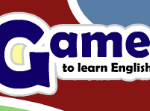 students to use independently. The content is suitable for any age except the youngest students. The game format sustains engagement in the activities. The site has been around since 2010, but in 2015, when Flash was phased out, the creator remade it in Javascript, so it can work on any device. There are also games for use with a class on an interactive whiteboard.
students to use independently. The content is suitable for any age except the youngest students. The game format sustains engagement in the activities. The site has been around since 2010, but in 2015, when Flash was phased out, the creator remade it in Javascript, so it can work on any device. There are also games for use with a class on an interactive whiteboard.

Games to Learn English has extensive practice for about two dozen individual vocabulary words in each of its thirty-one categories. Content is paired with images, so the vocabulary is easy to understand. The vocabulary sets are the same in the games that offer students their choice of category. Words are also repeated several times in the fast succession of parts of different games, so vocabulary is reinforced. Audio accompanies all of the activities with a mix of British and American accents.
In many of the games, students can start by clicking on the pictures and hearing the terms spoken. Then they can play the game. For example, in the Vocabulary game, there are three sets of two types of matching games with total points for correct answers minus the number of hints. After playing all the sections of a game, students may choose to add their name and country to the list of scores from around the world. Poland, Taiwan, Denmark, Columbia, Thailand, Norway, Malaysia, and the U.S.
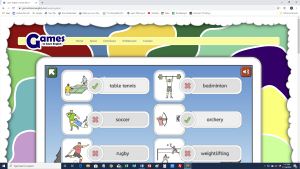 The feature that sets Games to Learn English apart from others is that it also contains sentence-building activities. Most of the sentences are short, but they offer consistent practice with one basic aspect of grammar. In the Jobs game, students put together sentences in the present tense. Students can match present and past tense vocabulary and then use these words in simple past tense sentences in the Past Tense game. In another activity, they can choose the words that match a picture and then insert the correct comparative form in a short sentence. In Phrasal Verbs, they have to match the phrasal verbs with the pictures to create sentences. Whether students click on words to make phrases or sentences in Phrase Making depends on the topic. Sentences are even used in the Prepositions game. They can practice making questions in Animal Mystery or make longer sentences with Falling Clouds or Bubbles. Students create real Conditional Sentences, one half at a time, and later combine them.
The feature that sets Games to Learn English apart from others is that it also contains sentence-building activities. Most of the sentences are short, but they offer consistent practice with one basic aspect of grammar. In the Jobs game, students put together sentences in the present tense. Students can match present and past tense vocabulary and then use these words in simple past tense sentences in the Past Tense game. In another activity, they can choose the words that match a picture and then insert the correct comparative form in a short sentence. In Phrasal Verbs, they have to match the phrasal verbs with the pictures to create sentences. Whether students click on words to make phrases or sentences in Phrase Making depends on the topic. Sentences are even used in the Prepositions game. They can practice making questions in Animal Mystery or make longer sentences with Falling Clouds or Bubbles. Students create real Conditional Sentences, one half at a time, and later combine them.
Games to Learn English is a valuable site to bookmark for students who are starting to learn English.
https://www.gamestolearnenglish.com/
Marilyn Pongracz is the Technology Coordinator for NJTESOL/NJBE and the English Language Resource Center Supervisor at Bergen Community College.
What does be mean?
By Jeffrey Linn
 When we investigate the history of “be,” we find that the conjugation was cobbled together over time from three separate words! Does it look a bit like Spanish es and does are a bit like Spanish eres? It is, perhaps, no accident. The *es root for be is shared among a number of Indo-European languages reaching back into antiquity. Was and were came from Germanic root words that were eventually adopted as the past tense forms.
When we investigate the history of “be,” we find that the conjugation was cobbled together over time from three separate words! Does it look a bit like Spanish es and does are a bit like Spanish eres? It is, perhaps, no accident. The *es root for be is shared among a number of Indo-European languages reaching back into antiquity. Was and were came from Germanic root words that were eventually adopted as the past tense forms.
Be itself probably stems from the same root (no pun intended) as Greek phytos (plant) and is related to the meaning “grow.”
When be spelled b-e is used, it is very often used as an imperative.
For example, here are the sentences for the meaning 1 of be, “used to connect two things or a thing with something that it has as a quality or condition,” in the Cambridge online dictionary entry:
It is cold today.
My name is Andy.
She is a doctor.
How old are you?
These books are (= cost) $12.99 each.
Please be patient.
The actual word be is only used in one example. And note that while there is a similarity in the message of these sentences, the example using be has a decidedly different flavor to it. The former are states of being.
Please be patient is a command.
Be can be deployed in various instances, including the infinitive, a gerund and as a progressive, but there is apparently no other verb in English where the imperative form is quite so unique among the other forms.
Consider:
I run. I am.
You run. You are.
She runs. She is.
Run away. Be patient.
Here is another set of examples from the Cambridge entry:
“used with the past participle of other verbs to form the passive:
He was asked to wait.
Please be seated.
The World Trade Center was built in the early 1970s.”
The imperative usage pops up again, here where be is used to form the passive voice. And while the be example looks like a passive, it is difficult to reconstruct the complete form.
For example, we can reconstruct:
He was asked to wait by somebody.
The World Trade Center was built in the early 1970s by an incredible team of architects, engineers, and builders.
But we cannot reconstruct Please be seated by somebody without altering the message of the sentence. Please be seated is really an imperative meaning Have a seat.
It appears that when be (spelled b-e) appears, it quite often means not merely “exist,” but also “make that change” The fact that be (spelled b-e) is very frequently employed as an imperative can be imparted to students, as long as it is not presented exclusively.
References
Online Etymology Dictionary, “be (v.)”, https://www.etymonline.com/word/be
Online Etymology Dictionary, “am (v.)”, https://www.etymonline.com/word/am
Online Etymology Dictionary, “was (v.)”, https://www.etymonline.com/search?q=was
Online Etymology Dictionary, “*bheue-”, https://www.etymonline.com/word/*bheue-
Cambridge Dictionary, “be verb”, https://dictionary.cambridge.org/us/dictionary/english/be
ThoughtCo, “Definition and Examples of the Imperative Mood in English: Glossary of Grammatical and Rhetorical Terms”, https://www.thoughtco.com/imperative-mood-grammar-1691151
Jeffrey Linn is a guest contributor for Voices.
Poetry in the ESL Classroom
By Sara Lancellotti
 When I was completing my student teaching 25 years ago in Prince George’s County, Maryland, I had the privilege of observing ESL teachers who loved poetry and communicated this love to their students. The ESL teachers extended a writer’s workshop into a poetry workshop and it was very successful. After a prolonged absence I recently returned to teaching ESL in elementary schools this year. As I was contemplating my lessons, I found myself writing emails to parents encouraging them to take their children to the library to check out books that used rhyme. I followed that up by emptying my own children’s bookshelves at home and made the books available to my students for daily in-class reading. Students were also encouraged to take at least one home each day to read.
When I was completing my student teaching 25 years ago in Prince George’s County, Maryland, I had the privilege of observing ESL teachers who loved poetry and communicated this love to their students. The ESL teachers extended a writer’s workshop into a poetry workshop and it was very successful. After a prolonged absence I recently returned to teaching ESL in elementary schools this year. As I was contemplating my lessons, I found myself writing emails to parents encouraging them to take their children to the library to check out books that used rhyme. I followed that up by emptying my own children’s bookshelves at home and made the books available to my students for daily in-class reading. Students were also encouraged to take at least one home each day to read.
As you are looking to plan lessons for the Spring, April is National Poetry  Month! It surprises me that some teachers do not fully appreciate the pedagogical value of poetry. Poetry is an effective tool in the Elementary ESL classroom! Poetry taps into oral traditions! Writing poetry encourages creative expression, and challenges kids to think in metaphors. It promotes early literacy (think about word families and nursery rhymes). Further poetry reveals perennial truths and captures moments in time. Lastly, poetry help emergent bilingual students to hear language as well as to express themselves concisely and precisely. With all these reasons in mind, I decided to expose my students to poems that move me; but, first, I asked their parents to help the children find a poem in their native languages to read to the class. This was a chance to celebrate their cultures, and to remember that poetry is international. Next, I taught them some genres — like haikus, limericks and concrete poems. They worked in groups, rewrote the poems on posters and illustrated them beautifully. A survey showed that the two favorites poems were Shel Silverstein’s “Lazy Jane” and the first stanza of William Blake’s “Tiger, Tiger”, but one student said that she liked the Italian poem she brought from home best. By the end of the week, some of the students had memorized poems on their own. It really allowed me to travel in time to remembered my time studying and later teaching ESL in Maryland. I now realize that the next step is to get my students to write their own poems. It is something to look forward to as we head into darker days and the cooler nights of winter.
Month! It surprises me that some teachers do not fully appreciate the pedagogical value of poetry. Poetry is an effective tool in the Elementary ESL classroom! Poetry taps into oral traditions! Writing poetry encourages creative expression, and challenges kids to think in metaphors. It promotes early literacy (think about word families and nursery rhymes). Further poetry reveals perennial truths and captures moments in time. Lastly, poetry help emergent bilingual students to hear language as well as to express themselves concisely and precisely. With all these reasons in mind, I decided to expose my students to poems that move me; but, first, I asked their parents to help the children find a poem in their native languages to read to the class. This was a chance to celebrate their cultures, and to remember that poetry is international. Next, I taught them some genres — like haikus, limericks and concrete poems. They worked in groups, rewrote the poems on posters and illustrated them beautifully. A survey showed that the two favorites poems were Shel Silverstein’s “Lazy Jane” and the first stanza of William Blake’s “Tiger, Tiger”, but one student said that she liked the Italian poem she brought from home best. By the end of the week, some of the students had memorized poems on their own. It really allowed me to travel in time to remembered my time studying and later teaching ESL in Maryland. I now realize that the next step is to get my students to write their own poems. It is something to look forward to as we head into darker days and the cooler nights of winter.
Sara Lancellotti works as an ESL teacher in the Roselle Public Schools.
She can reached via email at sara.lancellotti@gmail.com

